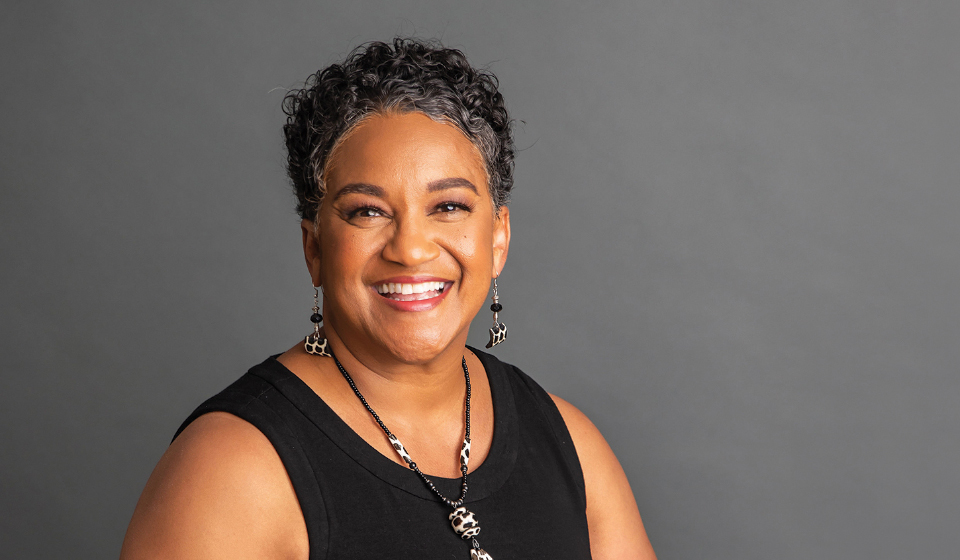Momentum

Power of Song
From the moment of capture, through the treacherous middle passage, after the final sale and throughout life in North America, the experience of enslaved Africans who first arrived at Jamestown, Virginia, some 400 years ago, was characterized by loss, terror and abuse.
“From this tragic backdrop one of the most poignant American musical genres, the Negro spiritual, was birthed,” explained Donna Cox, professor in the Department of Music. “Sometimes called slave songs, jubilees and sorrow songs, spirituals were created out of, and spoke directly to, the black experience in America prior to the Emancipation Proclamation of 1863, that declared all slaves free.”
Even with a new language, English, and without familiar instruments, the enslaved people turned the peculiarities of African musical expressions into the African American sound.
Rhythms were complex and marked by syncopation, an accent on the weak beat. Call-and-response, a technique rooted in sub-Saharan West African culture, was frequently employed in spirituals. Call-and-response is very much like a conversation — the leader makes a statement or asks a question and others answer or expound.
“An example of this is the spiritual, ‘Certainly, Lord,” said Cox. “The leader excitedly queries, ‘Have you got good religion?’ and others jubilantly respond, ‘Certainly, Lord.’ Using repetition and improvisation, the conversation continues to build until everyone exclaims, ‘certainly, certainly, certainly, Lord!’”
In Africa, drums were used to communicate from village to village because they could be used to mimic the inflection of voices. As early as 1739 in the British colonies, drums were prohibited by law and characterized as weapons in an attempt to prevent slaves from building community and inciting rebellion. As a result, enslaved people “played” drum patterns on the body. Hands clapped, feet stomped, bodies swayed and mouths provided sophisticated rhythmic patterns.
“Some spirituals were derived from African melodies,” said Cox. “Others were ‘new,’ freely composed songs with a melodic phrase borrowed from here and a rhythmic pattern from there — all combined to create a highly improvised form.”
The spiritual was deeply rooted in the oral tradition and often created spontaneously, one person starting a tune and another joining until a new song was added to the community repertoire. Textually, the spiritual drew from the Hebrew-Christian Bible, particularly the Old Testament, with its stories of deliverance and liberation.
“Songs like ‘Go Down Moses’ direct the awaited deliverer to ‘go down’ to Southern plantations and ‘tell ole Pharaoh’ — the masters — to ‘let my people go,’” said Cox.
For the slaves, the spiritual proved to be an ingenious tool used to counter senseless brutality and the denial of personhood. In order to survive emotionally, resilience was critical. In the spirituals, slaves sang out their struggle, weariness, loneliness, sorrow, hope and determination for a new and better life. Yet these are not songs of anger. They are songs of survival that voice an unwavering belief in their own humanity and attest to an abiding faith in the ultimate triumph of good over systemic evil.
The spirituals could also serve as acts of rebellion. They were used to organize clandestine meetings, and announce activities of the Underground Railroad. Songs like “Great Camp Meeting” were used to announce when secret gatherings were being planned.
“The spiritual served as a mediator between the dissonance of oppression and the belief that there was ‘a bright side somewhere,’” said Cox. “Four hundred years after the birth of slavery, as the world still struggles with racial division, injustice and a sense of hopelessness, spirituals can teach how to build hope in the face of despair and challenge the status quo.”
This article is adapted from a piece that originally appeared in The Conversation.
